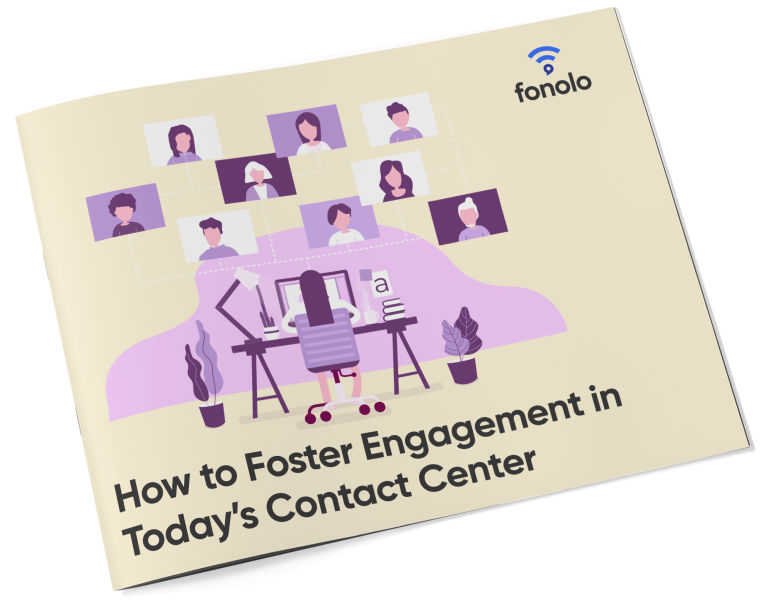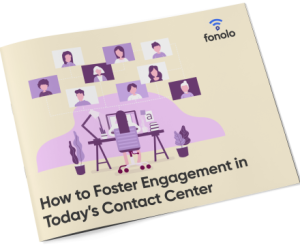Last year, COVID-19 shifted many call center environments to new models. Nation-wide lockdowns forced many call center companies to either shut down or adapt to a work-from-home model.
Despite the pandemic, one thing is certain. Call centers provide a vital service to customers worldwide. An overwhelming majority (76%) of customers prefer phone communication with customer service representatives, as it often provides an immediate solution compared with live chat, email, and social media channels.
The call center environment evolved to a few different forms after COVID-19. Here we’ll go through the three common environments, how COVID-19 altered and continues to alter them, and how to optimize each environment to improve agent productivity, customer experience, and profits.
Physical call center environments.
A physical call center environment, also known as a traditional call center, has dedicated employee workstations within one or multiple floors of an office building. Employee workstations look like a row of semi-boxed-off cubicles, with a desk, chair, computer, and phone. Physical call center environments are often noisy and tense, but agents connect with each other and build closer relationships.
Call centers that kept their physical offices still experienced certain changes due to the COVID-19 pandemic. With the rise of certain variants, companies must maintain safety protocols including mask-wearing and social distancing, perhaps by having limited agents in the office at a time, or by creating more space between workstations.
The economic downturn caused by the pandemic is expected to result in more job loss. Call centers may look to reduce costs either by laying off employees or transitioning to work-from-home models to save on rent fees.
If you’re working with a physical call center environment, make the best of it. To optimize your physical call center environment, do the following:
- Invest in comfortable chairs and improved ventilation.
- Promote flexibility by offering your agents the option to choose their hours or work from home some days.
- Take advantage of the opportunity for collaboration by encouraging group projects and scheduling fun with call center agent engagement games.
- Update your call center technology to ensure your agents are productive and prepared, and to reduce IT support costs.
- Invest in Voice Call-Back software and Web Call-Backs (formerly Visual IVR) to save on operational costs in light of still making office rent or mortgage payments.
TIP:
Engage your agents with call center agent engagement games.
Remote call center environments.
Remote call center environments existed even before the COVID-19 pandemic. However, many call centers saw work-from-home as part of their work strategy, but not their entire strategy.
Work from home for a call center looks like individuals providing customer support with company tools and products from their own homes. Agents communicate through online platforms and via phone but miss out on the in-person community that’s unique to a physical call center environment. Many call center managers find it challenging to maintain a sense of community and manage agent productivity in a work-from-home model.
Despite its challenges, remote work is becoming a new reality for most call center agents after the pandemic. Many call centers discovered an over-investment in office facilities – by transitioning to the work-from-home model, companies were able to save big on rent costs and real estate. Plus, with new advancements in cloud-based technology, it’s become a lot easier to manage agents with the right strategy in place.
If your call center has switched to a fully remote work model, optimize your environment with these tips:
- Build culture and community through regular video communication.
- Schedule regular meetings between management and agents.
- Provide evidence-based feedback through call center metrics and call monitoring, to employees when discussing performance and productivity.
- Promote community by finding virtual opportunities to connect, like virtual lunch dates.
- Take the time to invest in call center cloud-based technology to maximize agent productivity at home, since you have more room in your budget from reduced rent costs.
DID YOU KNOW?
76% of customers prefer phone communication with customer service representatives?
Hybrid call center environments.
Hybrid call center environments are a mix of physical and remote workspaces. Often seen as the future of work amidst the nearing pandemic recovery, hybrid work models provide team members with the freedom to split their work time between the office and home.
Hybrid work environments usually promote more collaboration in the office, as office time is dedicated to in-person presentations, meetings, and other initiatives that benefit from some face-to-face communication.
To optimize your hybrid call center environment, consider the following tips:
- Schedule office days for meetings and teamwork, where the most collaboration can take place.
- Communicate expectations clearly and frequently to your agents, so they know exactly what’s expected when they’re working from home or the office.
- Provide up-to-date call center software and technology to minimize delays and inefficiencies due to technical issues.
Conclusion.
No matter your call center environment, you always have opportunities to engage your agents, track progress, update software, and communicate clearly. The future of work looks like more hybrid call center environments, which offers cost-saving benefits for call center executives.


